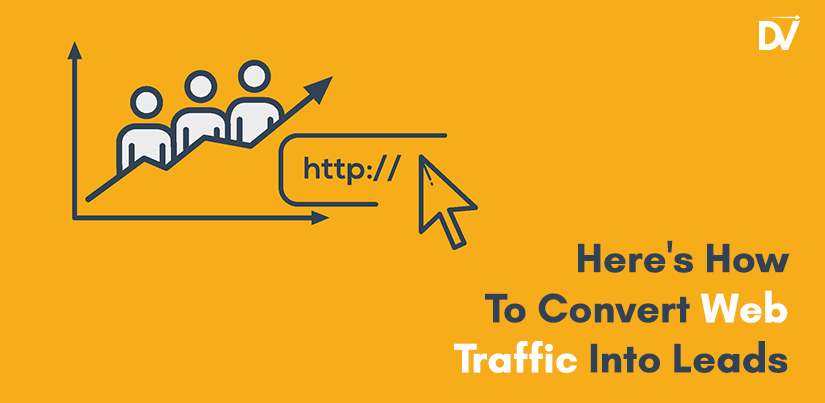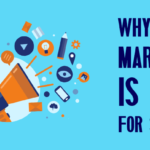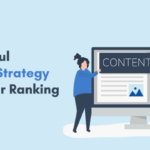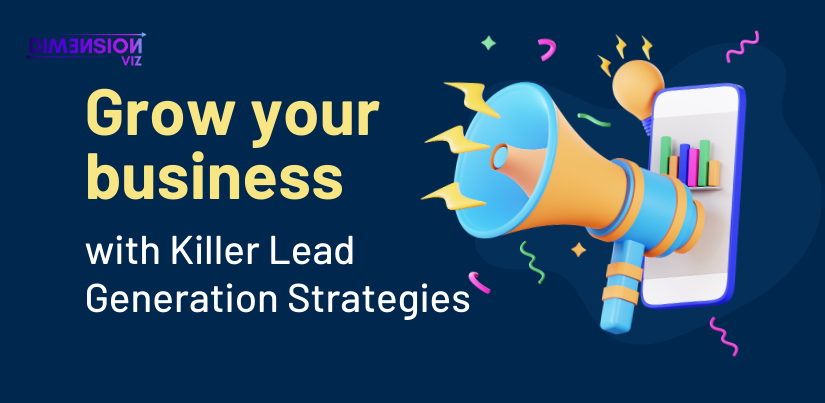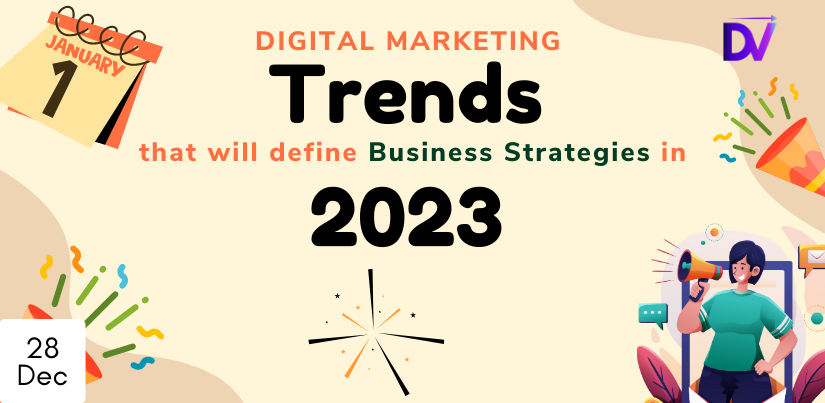Here’s How to Convert Web Traffic into Leads
Driving website traffic is a component of performance marketing, but websites are primarily in charge of turning visitors into paying customers. The design, usability, and copy of a webpage all affect how well it performs. In order to maximize the return on your traffic-generating investments, this article examines how to convert traffic into leads.
What constitutes a marketing lead?
The term “lead” is frequently defined differently by different marketing teams. For the purposes of this article, “leads” are actual people who have provided you with their contact information after expressing some level of interest in your product or service.
But not all leads are made equally. Some people purchase more frequently than others.
Robert F. Bales, a professor of social psychology at Harvard, developed a way to gauge how people interact in small groups in the 1950s. Modern market research was made possible as a result. Based on their buying intent, three categories of purchasers are found to exist in any market at any moment, according to studies utilizing his methodology:
- Satisfied with the current situation (56.5 percent)
- Unhappy with the current situation (40.5 percent)
- Actively looking to buy (3 percent)
To understand how customers behave at each of these three stages, marketers must first conduct research on their target audience. Then, apply these findings to every stage of the marketing funnel’s messaging, content, and creative strategy.
How to turn visitors into leads?
You may find solutions for how customers connect with your business online after you understand why they make purchases from you. On digital platforms, lead generation frequently involves a value exchange. As advertising platforms adhere to new data protection standards, this valuable first-party data will become crucial to digital marketing efforts.
Users of websites are eager to exchange their personal data for benefits such as discounts, how-to manuals, invitations to exclusive events, etc.
Here are 5 ways to turn web traffic into leads:
1. Make a strong offer.
A user must be interested in what you are offering if you want their personal information, such as name and email. This could be a special discount in B2C. This might be a thorough original research study in business-to-business.
2. Introduce a landing page.
The following are the components of a successful landing page:
- Two headlines the major one and the accompanying one. Heading structures aid search engines like Google in indexing and crawling your website, increasing the amount of traffic from organic searches.
- Images or videos demonstrating usage context. Some customers need to see a product or service because they are visual learners.
- The advantages of your offer. Focusing on a product’s attributes rather than the benefit to the customer is a standard marketing mistake.
- A functional form. Nothing is more upsetting to a marketer than discovering a form is flawed. Before driving traffic, make sure your landing page is functioning properly.
- A request for action. When visitors arrive at your page, what do you want them to do? Make sure it is obvious what the users should do.
- Social evidence. Customer endorsements, ratings, and reviews are a few examples. A strong motivation is hearing or seeing other customers discuss their interactions with your brand.
3. Encourage visitors to the landing page
To turn visitors into leads, your landing page needs traffic. Depending on your sector, digital marketing goals, and approach, you’ll require a certain amount of traffic. You must first be aware of the channels that your customers are most likely to use. It might be Twitter, Facebook, TikTok, LinkedIn, Google, or any number of other platforms. Then, in order to receive traffic that generates quality leads, you must manage each platform.
You can choose between a free or paid strategy for traffic generation on the majority of digital media. Each requires a unique type of investment. Paid takes money, while organic involves time. Money can be replaced. It’s not time. Over time, an organic plan can assist in lower acquisition expenses, while paid media marketing enables companies to scale leads quickly.
4. Test and evaluate outcomes
Thousands of users could be directed to your landing page. Some of these might even result in leads and sales. However, you won’t be able to improve or change with the market if you don’t test and measure results. Here are some metrics to keep an eye on for ongoing development:
Call-to-action call-through rate (CTR). The percentage of users that clicked on a call to action is measured here. When evaluating new messaging or graphics, it can be useful.
Each landing page’s conversion rate. This calculates the percentage of users who become leads. To find out what works best, this can be compared to different landing pages.
Quantity of new leads and sales generated by specific offers. This aids in identifying the offers generating the most quantity and/or quality leads.
5. Make changes to the offer, landing page, and traffic generators based on insights
If you don’t act on the insights, measuring data and reviewing reports won’t be of much use to you. Because of this, it’s crucial to create a structure for your marketing team that enables input to affect changes and the course of your marketing efforts.
You might start a set of landing pages, for instance. However, one of them fails to load properly on mobile, which results in an unusually high number of users bouncing. This may be noticed in Google Analytics, resulting in an audit and changes to the page’s layout that may boost traffic and possibly result in conversions. However, this is only feasible if the appropriate team and system are in place.
Reasons for failure to convert website traffic
Now that we are aware of the procedure for turning visitors into leads, let’s look at some frequent errors that lead to users leaving your website.
Lack of a strong CTA or offer. Users are unlikely to convert into leads if your offer or call-to-action doesn’t resonate with the traffic you’re driving.
User experience is poor. User experience is influenced by a variety of elements. For instance, if a user clicks on a link and the website loads slowly, they can get impatient and click “return” to the previous page. Additionally, readers may be discouraged from proceeding if a web page includes difficult-to-read typefaces, bad text, or intrusive visuals.
The page is very scratchy. Too many form fields call to action that is hidden, difficult-to-find phone numbers, and buttons that blend in with the backdrop or don’t appear to be clickable are just a few possible offenders. These may seem like insignificant details, but they have a real impact on performance and conversion rates.
Either too little or too much information. You want to provide your ideal prospect with the knowledge necessary to decide depending on where they are in the purchasing process. Not too little, not too much.
There are too many off-page links. Users may become confused or browse too far away if there are too many links on a page, which increases the chance you’ll lose out on possible leads. The links on a landing page should always correspond with the following actions you want your user to do. This is another typical error.
How to turn blog visitors into leads?
To turn traffic into leads, you don’t always need a specific landing page. Blog pages are an important source of organic traffic for many organizations. Email addresses and other personal information can be collected by marketing teams in a number of ways.
- Newsletter subscriptions. Many customers will choose to receive your email newsletter if they believe you will give quality material (and no spam).
- A PDF download. Particularly if it’s something like an annual study report, users still download PDFs. A form can be used to give this type of content in exchange for an email address.
- Time-limited promotions. Give a limited-time discount or mention an expiration date to encourage blog readers to act right away. This can be to ask for a demo or a discount voucher for their initial purchase.
- Webinars. To sign up for and join a webinar, users must submit their email addresses. Visitors to a blog page might be eager to sign up for (or view a recording of) a webinar on a related subject.
- Quizzes. Using this strategy, blog traffic can be sent to a set of inquiries used to qualify the traffic and gather first-party information, such as name and email.
- Popups. Although excessive popups have a negative impact on user experience, they are one method of turning blog traffic into leads.
- Work with an agency with a difference
Making money has always been the goal of marketing. But continual change is the best approach. Because of this, it’s crucial to continuously test your landing pages’ conversion rates and make timely adjustments. Our analytics tools enable you to increase conversion rates and send more qualified leads to your sales team. To begin today, get in touch with us.


